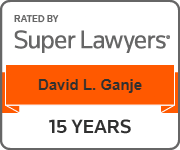Appeal Motion against Department of Interior Bureau of Land Management
David L Ganje
Ganje Law Office
9603 W Cedar Hill Circle
Sun City Az 85351
Web: lexenergy.net
605 385 0330
davidganje@ganjelaw.com
Attorney for Appellant
CASE REFERENCE NUMBERS:
X
X
X
X )
Appellant ) IBLA No. X
)
) Appellant’s MOTION For an Order
) Reversing the BLM Decision based
) on the Erroneous Application of ) Law
__________________________________________)
RE: BLM’s January 14, 2025 Decision
Appellant moves pursuant to 43 CFR § 4.407(a) for the following relief under her pending appeal of the January 14, 2025 Decision and Notice of Trespass of the Bureau of Land Management of the United States Department of Interior (“Decision”). The Bureau of Land Management (“BLM”) written Decision is attached to the Appellant’s Notice of Appeal as Exhibit A.
Appellant’s Motion for an Order Reversing the BLM Decision
1. Appellant respectfully moves that the Board, after consideration of the Appellant’s papers and the administrative record, enter an order and decision reversing the BLM Decision based on the BLM error of law regarding the BLM’s application of its trespass damages formula.
2. The BLM failed to use correct damages law in calculating alleged damages and failed to follow South Dakota precedent in the calculation of claimed and alleged damages. Damages should be calculated as the value of minerals as the minerals are found in-place.1
3. In the controlling case of U.S. v. Homestake Min. Co., the 8th Circuit Court of Appeals set out the facts of the case which involved a civil trespass prosecution by the United States Attorney for South Dakota for trespass against the defendant, Homestake Mining. At the trial, the parties stipulated that the value of removed wood and timber taken “in the tree” was $1,757.75, while the value of the manufactured lumber and cord wood was stipulated to be $10,451.06 when the defendant, Homestake, used the removed wood. The District Court instructed the jury to return a verdict against the defendant for the amount of $1,757.75. The verdict by the jury was in the amount of $1,757.75. The judgment on this verdict was appealed by the United States at U.S. v. Homestake Min. Co., 117 F. 481 (8th Cir. 1902).
4. In Homestake, the 8th Circuit discussed the basis for determining trespass damages in South Dakota for mining and timber trespass, describing and distinguishing between damages caused by a willful trespasser and damages caused by an innocent trespasser. The 8th Circuit upheld the judgment of the United States District Court for South Dakota. The Homestake ruling stated that when innocently trespassed upon, the value of timber or mineral material would be determined in-place to calculate damages as opposed to the much higher, sale price, valuation of material which is reserved for intentional trespass.2 The BLM did not use this established South Dakota method of calculating damages in the case at bar despite administrative instructions to pursue damages according to the laws of the state in which the trespass took place in “In-place evaluation is derived from (1) legal theories of trespass as they relate to state law; and (2) distinctions between good faith trespassers and willful or bad faith trespassers.” U.S. Dep’t of the Interior Bureau of Land Mgmt., BLM Manual MS-3630 (2016) citation at: MS-3630 Mineral Material Fair Market Value (FMV) Evaluation (P). In South Dakota a damages claim against an innocent trespasser is not intended to impose a financial penalty against the trespasser. An innocent trespasser is relieved of her liability when “restitution” of the value of the ore in the mine is made. Homestake at 486. In this appeal, the erroneous damages claim amount issued by the BLM is effectively a financial penalty against the Appellant rather than reimbursement or restitution for the loss to the government.
5. The BLM Decision acknowledges the alleged trespass was an innocent trespass (Decision, pg 2). Having adopted that set of facts, the BLM did not apply correct law and legal precedent in calculating claimed damages based on an act of innocent trespass. Under the damages rule and under Mason v. U.S., 260 U.S. 545 (1923), the rule of damages to be applied “will be the measure of damages prescribed by the laws of the State in which the trespass is committed, unless by Federal law a different rule is prescribed or authorized.” 43 CFR 9239.0-8. The South Dakota Rule on innocent trespass damages is imparted in 43 CFR 9239.0-8, and established in U.S. v. Homestake Min. Co., 117 F. 481 (8th Cir. 1902). The South Dakota rule of damages for innocent trespass found in Homestake is the value of ore in the mine, also referred to as the in-place value or value in the ground.3
6. It is respectfully submitted that whether the BLM correctly applied the law is a threshold question for the Board. The Board has authority de novo on questions of law. This Board is empowered to ensure that BLM follows the law. The Board’s authority over questions of law is plenary. If the legal formulations or conclusions of the BLM are wrong on an issue of law, the Board can reverse the Decision. In the matter at bar, because incorrect law was applied by the BLM in the Decision against Appellant, the Decision should be reversed.
7. Prejudicial error occurred in the BLM Decision. The BLM’s mistake in its application of law affected the outcome of the Decision through the BLM’s damages calculation. The prejudice to the Appellant also constitutes an abuse of discretion by the BLM because an error of law is an abuse of discretion. Desert Sportsman’s Rifle and Pistol Club, Inc., 188 IBLA 339, 346 (2016) (“The Board will therefore set aside a BLM decision if we conclude it is arbitrary, capricious, an abuse of discretion, or lacks a rational basis supported in the record”) “An agency action, however permissible as an exercise of discretion, cannot be sustained ‘where it is based not on the agency’s own judgment but on an erroneous view of the law.'” See Sea-Land Serv.. Inc. v. Dep’t of Transp.. 137 F.3d 640, 646 (D.C.Cir. 1998) (quoting Prill v. NLRB. 755 F.2d 941, 947 (D.C. Cir. 1985)). The Decision in this case should be reversed.
8. This Honorable Board has addressed the method of calculating damages when the United States is the owner of the minerals in question. In Curtis Sand & Gravel CO. Est. of Clare Schweitzer, 95 IBLA 144 (1987) the Board concluded that the BLM could, if consistent with state law, establish trespass damages for a non-willful trespass resulting from the unauthorized removal of sand and gravel reserved to the United States in accordance with the royalty value of the material removed as set forth in a private lease, if the lease arrangement were an arm’s-length transaction. In Appellant’s case before this Board, South Dakota trespass damages law on the question of innocent trespass damages has been established. Homestake provides the method of calculating damages; the claim amount is the in-place value of the minerals, not the crushed value of the mineral, not the value of a finished product, not a value which includes processing costs, not a value which includes transportation costs, and it should not be a value determined by the end-user purchase price. The Curtis Board discussed its holding rationale in that 1987 case, “In essence, we are looking for the fair market royalty value, i.e., that value which would have been set by a willing buyer and seller through the ‘haggling of the market.’ Kimball Laundry Co. v. U.S., 338 U.S. 1, 6 (1949). The United States is simply not entitled to be compensated for the value of rights and privileges which it could not have granted. In determining trespass damages, BLM must factor out such private rights and privileges to the extent they affected the royalty rate set in the private lease BLM relies upon.”
9. The Curtis Board adopted the California state approach to determine innocent trespass damages for in-place minerals in a California U. S. District Court decision, U.S. v. Marin Rock & Asphalt Co., 296 F. Supp. 1213 (9th Cir. 1969). The California Marin court ruled, “The closest California case on its facts to the case at bar is Farrington v. A. Teichert & Son, Inc., 139 P.2d 80 (1943). The case involves the good faith extraction of sand and gravel, and the measure of damages is defined as “the reasonable value of the rock, sand and gravel in place.” Id. at 83.” The Marin District Judge held, “I hold that a reasonable royalty is a permissible measure of damages for extraction of sand and gravel by a good faith trespasser under California law.” The reasonable royalty in that case was the in the ground, before severance, in-place, ‘unprocessed’ mineral value.
10. The Department of Interior and the BLM have promulgated by administrative rule the directive that court decisions are authority for the calculation of damages for described categories of trespass. 43 CFR § 9239.5-3(a)(1) and 43 CFR § 9239.5-3(a)(2). This Board has ruled that court decisions are applicable for calculating damages under state law concerning trespass claims. CM Concepts of Nevada, 126 IBLA 134 (1993); Curtis Sand & Gravel Co. Est. of Clare Schweitzer, 95 IBLA 144 (1987); John Aloe, 117 IBLA 298, 301 (1991); Frehner Constr. Co., 124 IBLA 30 (1992); M.L. Peterson, 151 IBLA 379 (2000).
Wherefore Appellant respectfully moves that, after consideration by the Board of the appellate record and the merits of the appeal, the written Decision of the BLM against the Appellant be reversed and the matter remanded to the BLM.
[Signed]__________________
David L. Ganje
Attorney for Appellant
X
9603 W. Cedar Hill Circle
Sun City, AZ 85351
davidganje@ganjelaw.com
813-244-4132
Certificate of Filing and Service
On ____________, 2025, the preceding document, Appellant’s Motion for an Order Reversing the BLM Decision based on the Erroneous Application of Law, was filed by email submission to:
Office of Hearings and Appeals
Interior Board of Land Appeals
801 North Quincy St., Suite 300
Arlington, VA 22203
ibla@oha.doi.gov
and served by email on:
X
X@X.com
X
X@X.com
/_________________
David L. Ganje
Attorney for the Appellant




